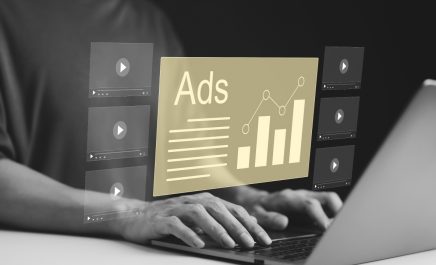Trusted by Global Brands
Recently Added Programmatic Ad Experts in our Network
Aman G HeHim
Greater India Media Associate, PSExp. 3 Years- DV360
- CM360 [DCM]
- Data Analysis
- AI
- Apache Spark
- Meta
- Spark
- Google Ads
- Firebase
- and more
Ekta Jha
EXPERIENCE Senior ManagerExp. 10 Years- Campaign Management
- Account Management
- Team Lead
- Microsoft Office
- Salesforce CRM
- Digital Marketing
- and more
Mohammed Shakeeb Ashfaque
Team Lead Digital MediaExp. 9 Years- Time Management
- Leadership
- Quick Learner
- Problem Solving Attitude
- Programmatic Ads
- and more
Hire Programmatic Ad Experts in 4 Easy Stepssss
Tell us what you need
We'll get in touch with you to understand your requirements and preferences.Meet the top talent
Get 3 to 5 suitable, pre-vetted candidates in 48 hours.Interview with ease
Choose the candidate that aligns with your needs and we'll arrange an interview.Hire with confidence
Once you decide, we'll take care of the onboarding process for you.
With Uplers,
no more posting a job on multiple portals.









Top Clients Reviews


Uplers helped to source and bring out the top talent in India, any kind of high-level role requirement in terms of skills is always sourced based on the job description we share. The profiles of highly vetted experts were received within a couple of days. It has been credible in terms of scaling our team out of India.


Uplers helped Tanium successfully grow their distributed team and achieve business goals in 2020, amidst the pandemic and talent shortage. Tanium was able to onboard the right fit on time to launch their marketing campaign, which played a crucial role in its growth story. Tanium found Uplers’ talents to be quick, efficient, and remarkable.


Uplers impressed me with their speed. They onboarded us, found a great candidate (Imran), and had us up and running in less than a week. The process was smooth, and while Imran had more experience than I initially expected, I felt confident he'd be a perfect fit.
Case Study
FAQs
Can Uplers help me hire a programmatic advertising expert who understands B2B tech or SaaS funnels?
Yes. We specialize in helping tech-driven companies hire talent experienced in complex buyer journeys, including B2B, SaaS, and multi-touch attribution strategies in programmatic campaigns.
Do the experts I hire through Uplers manage the full programmatic ad lifecycle?
Absolutely. From strategy and media planning to execution, optimization, and reporting — our experts can work end-to-end or plug into your existing stack.
I need someone to help plan, execute, and analyze a webinar promotion via programmatic. Can Uplers support that?
Yes. You can hire experts who've promoted webinars, gated content, and virtual events through display and video ad campaigns, including setup, audience targeting, and lead capture.
How do you ensure the expert you match me with understands my tech stack and industry?
Our matching process is built on your job brief. We use AI-based vetting aligned with your tools (e.g., DV360, The Trade Desk, Adobe, etc.) and conduct human-led evaluations to ensure domain relevance.
Is it possible to hire someone who can also suggest what tools or DSPs are best for us?
Yes. Many of our programmatic experts come with platform-specific certifications and can recommend DSPs, SSPs, and third-party tools based on your audience size, region, and campaign goals.
Can I work with the same expert across different campaigns or launches?
Definitely. Once hired, the expert works as an extension of your internal team. Whether you're planning multiple launches or scaling campaigns quarterly, they're with you throughout.
Can I monitor the expert's performance during the engagement?
Yes. Uplers ensures complete visibility — you directly manage the talent, while our account managers provide ongoing support, check-ins, and performance feedback loops.
What if my focus is on lead quality and not just impressions or CTRs?
We get it — performance over vanity metrics. Our experts are trained to optimize toward MQLs, SQLs, or downstream sales events based on your tracking tools and funnel goals.
Do you provide experts who can also coordinate with our internal marketing and sales teams?
Yes. We match talent who can adapt to your workflows and collaborate cross-functionally — whether it's syncing with sales enablement, content marketing, or analytics.
Is there flexibility to hire someone short-term for a launch or A/B testing sprint?
Absolutely. Whether you need support for a 6-month go-to-market push or a long-term demand-gen engine, our flexible hiring models adapt to your timeline and team structure.
What are the benefits of hiring a programmatic expert from Uplers?
Uplers is the best platform to hire a programmatic expert because we are:
- Serving 7000+ global clientele for over a decade.
- Curating a pre-vetted pool of the top 3.5% of Indian remote talent.
- Hassle-free remote hiring at up to 40% cost advantage.
- Hire across 5+ time zones in 5 business days.
What if I'm not happy with my programmatic expert?
Uplers offers a no-risk trial period of up to 2 weeks for our talented programmatic experts (subject to availability). It helps build trust and confidence for clients who are unsure after the interview and makes hiring easier.
Why should I hire a programmatic expert from Uplers?
Hire Programmatic Experts from Uplers and unveil an efficient way of executing business operations. Our talent curators take over the legwork and give you freedom from the tedious hiring process and even post-hiring responsibilities.
Check Our Latest Blogs
 Read
ReadHow Programmatic Experts Can Help You Stay Ahead of Advertising Trends
- Prachi Shah
- October 14, 2024
- 4 Minute Read
- Blog
Discover handpicked, vetted talents.
Gain access to over 1.5M talents, each assessed using Advanced-AI.
If you are looking for a job, head to uplers.com/talent. If you are looking to hire, click to activate the form.

























